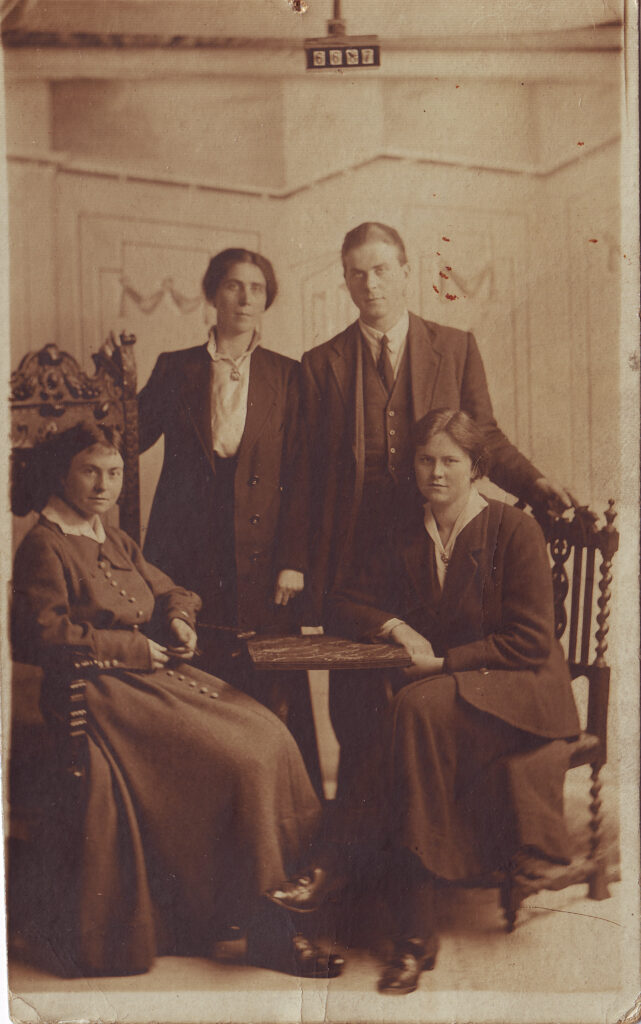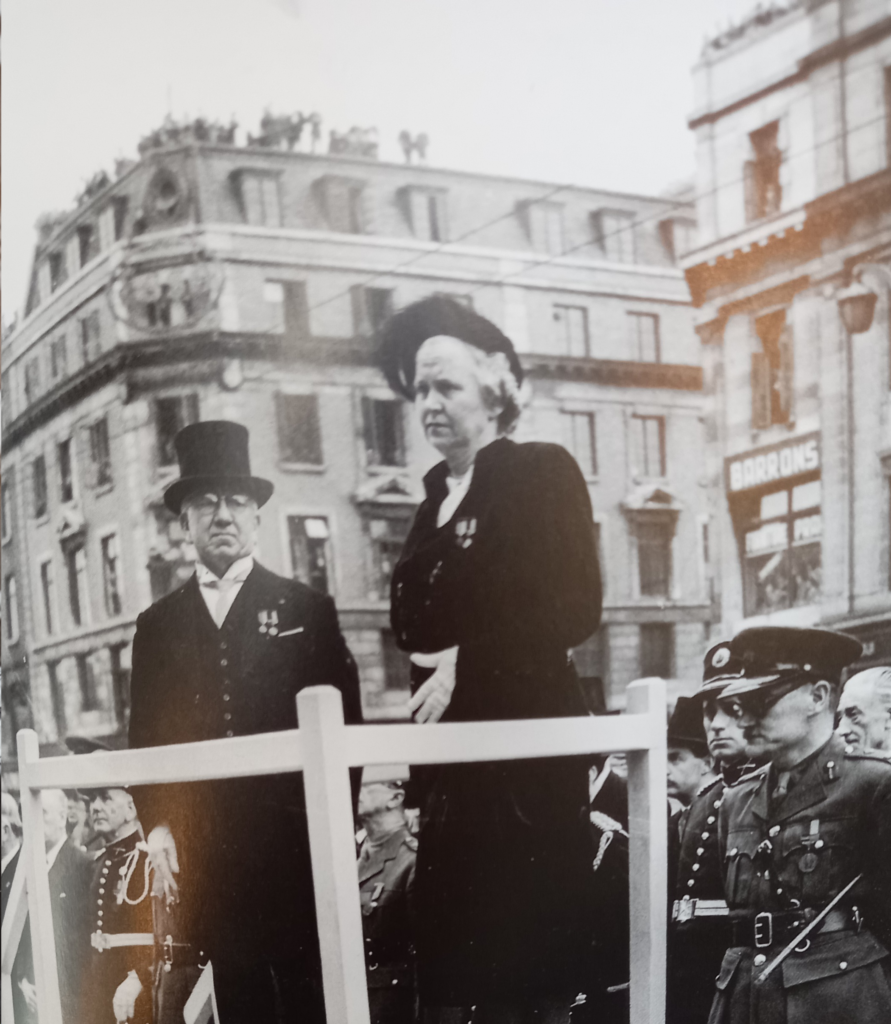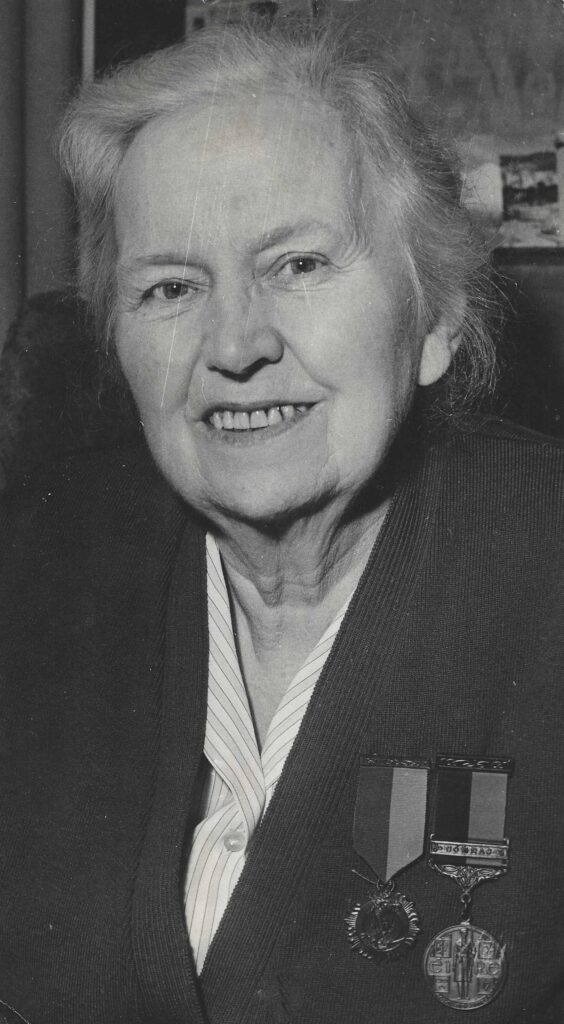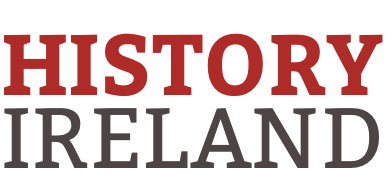By Brian Trench

In early 1925 a public analysis laboratory opened in Dawson Street, Dublin, in the premises to which the New Ireland Assurance Company had recently moved. The team of six scientists were all women, led by Phyllis Ryan, the first woman to become a public analyst in Ireland. She had been providing chemical analysis services to local authorities and health boards since 1920, gradually building up her client base, scientific staff and lab equipment. The Dawson Street premises were made available to her by virtue of the fact that her brother, James, and brother-in-law, Denis McCullough, were directors of New Ireland. They had both been involved in prison discussions after the Easter Rising about a possible wholly Irish insurance company, and New Ireland was established in 1917.
There were several other firsts in Phyllis Ryan’s life: she was the first woman to be awarded a Master’s degree in science from University College Dublin; she was the first woman to chair the Irish Chemical Association (now the Institute of Chemistry of Ireland); and she was for fourteen years Ireland’s ‘first lady’ as Phyllis Bean Uí Cheallaigh, wife of President Seán T. O’Kelly.
FAMILY BACKGROUND
Born in 1895, Philomena Frances (Phyllis) Ryan was the youngest of twelve children of John and Eliza Ryan of Tomcoole, south Co. Wexford. The Ryans were substantial farmers with a strong commitment to their children’s progress. Eleven of the twelve siblings continued their education beyond school; their occupations included nun, priest, doctor, university lecturers, schoolteachers and government minister. Two of the daughters married politicians who became government ministers.
The eldest son, Martin, became involved in Sinn Féin while a seminarian at Maynooth, and he introduced other family members to radical-nationalist ideas. The family’s Dublin house became a meeting-place for political activists, including, most frequently, Seán McDermott, Denis McCullough and Seán T. O’Kelly, all leading figures in the Irish Republican Brotherhood (IRB). James Ryan, then a medical student, was sworn into the IRB and became medical officer to the GPO garrison during the Easter Rising. His sisters Phyllis and Mary Josephine (Min) delivered dispatches for the rebels and helped organise medical aid, and in the following weeks they visited Seán McDermott in prison just hours before he was executed. McDermott had been expected to marry Min had he survived the Rising. Another Ryan sister, Nell, was arrested in the weeks after the Rising and spent time in six different prisons.
SCIENCE EDUCATION
Phyllis completed her undergraduate science degree in 1916 and a Master’s by research the following year. Her supervisor, Professor Hugh Ryan (no relation), recruited her to his growing group of graduate researchers, and the two Ryans co-authored papers delivered in 1918 to the Royal Irish Academy, some of this work being supported by Nobel’s Ltd, an explosives company. Peat was of particular interest to Phyllis and Hugh Ryan; she worked on its potential uses during her period under his supervision. Among her papers in the National Library’s Ó Ceallaigh and Ryan collection are handwritten notes on a paper by M. Ekenberg, which reports that peat ‘may be made into briquettes in a lignite briquetting plant’.
By this time Phyllis Ryan was prominent in Cumann na mBan, serving on the executive and as director of training, in which role she helped to establish new branches. In 1920, when she went to London for several months to train as a public analyst, she helped heal divisions within Cumann na mBan in that city. Back in Dublin, Prof. Ryan provided an office and laboratory in UCD’s Earlsfort Terrace buildings for Phyllis to set up as a public analyst. Here she also provided storage space and a meeting-place for IRA leaders during the War of Independence, most notably for IRA chief of staff Richard Mulcahy, her brother-in-law through his marriage in 1919 to Min Ryan.
For several decades the towering figure of Sir Charles Cameron dominated public health medicine and, with it, public analysis services. His death in 1921 opened opportunities for others to enter this niche market, Phyllis Ryan among them, first in association with another firm and then in her own name. She was the only woman among the handful of bidders for contracts from county and borough councils and district health boards. By 1924 she employed five assistants, all of them women. In 1925 she established her business at 12 Dawson Street, Dublin, headquarters of the New Ireland Assurance Company.
Public analysts provided services on demand to their clients, testing samples of drugs, water, butter and other foodstuffs, oil and other substances that were subject to quality standards. Occasionally they were called to give evidence in court cases brought against suppliers of allegedly contaminated products. The analysis techniques used were fairly straightforward but Phyllis Ryan also had wider interests in chemistry, becoming active in setting up an Irish alternative to the London-based Chemical Society and the Institute of Chemistry of Great Britain and Ireland, and providing its registered address at her business. She served as treasurer and then followed her mentor, Hugh Ryan, in serving as president of the Irish Chemical Association..

CONTROVERSARY
Ryan’s public analysis company at one stage had contracts with a dozen councils or health boards, but in the mid-1930s her efforts to build the company and then to secure increased fees for its services became controversial. In 1936 she married Seán T. O’Kelly, then minister for local government and public health, and she became a target for Fine Gael and other anti-Fianna Fáil councillors when her company’s claims were before them. (She was the second Ryan sister to marry O’Kelly; Mary Kate, known as Kit, had done so in 1918 but died in 1934.)
Although split by the Civil War, the Ryan family accumulated abundant Fianna Fáil credentials. James Ryan was a national public representative for 50 years, a TD from the first Dáil onwards, a Sinn Féin member, vice-chair and chair of Wexford County Council in the 1920s, a member of Fianna Fáil governments from 1932 to 1965 and then a senator until 1969. (James’s son, Eoin, and his grandson, also Eoin, were also public representatives in the Fianna Fáil cause.) From the party’s earliest days Nell Ryan was on the National Executive representing South Wexford. She was a member of Wexford County Council from 1928 to 1954, being its only woman member for much of that time. (She used the name O’Ryan in her public roles.) Phyllis was secretary to campaigns for Fianna Fáil candidates seeking the NUI seats in the Dáil. She herself secured election to the UCD governing body, and in 1934 Seán Lemass appointed her—the only woman among 24 members, including eleven professors—to the newly established Industrial Research Council, which advised the government on various technical issues, including possible commercial applications of seaweed, clay and peat (see HI 22.1, Jan./Feb. 2014, ‘Seán Lemass and Laurence Kettle: agents for technical change and industrial research’, pp 40–3).
It was bad enough for some councillors that a public analyst was a Fianna Fáil minister’s sister and the wife of the minister who had oversight of the local authorities and health boards that employed public analysts. Her continuing use of the name Phyllis Ryan for her scientific activities was a further cause of outrage. When the Rathdown Board of Assistance was considering Ryan’s case to be appointed their public analyst, board member Mrs Seán McGarry remarked that ‘there was no such person as Miss Phyllis Ryan … the applicant was the wife of Mr Seán T. O’Kelly’ (Irish Independent, 9 September 1937). Another board member, Mr Rollins, said that ‘he did not think the Minister should super-impose his wife on the Board and take the crust from the mouths of other people’. Ryan did serve Rathdown Board of Assistance as public analyst up to October 1939, when a new appointment was made but was deemed unsuitable by the Department of Local Government. But Mrs McGarry was sticking to her guns; whatever else might happen, ‘I would not sit at this Board and vote for Phyllis Ryan’ (Irish Independent, 25 January 1940).
In 1938–9 Ryan wrote to councils on her own behalf and as a representative of the Irish Public Analysts’ Association requesting increased fees. Wicklow county councillor J.J. Bourne commented on one such item of correspondence that ‘Mrs Seán T. O’Kelly—he was not going to call her Miss Phyllis Ryan—was not in a necessitous condition, and he considered it would be a gracious thing if this lady resigned her position’ (Irish Independent, 29 June 1938).
Ryan received a more courteous response from Wexford County Council, where her sister Nell was a member of its finance committee. Ryan had become public analyst for County Wexford in 1921 in succession to Charles Cameron. In April 1939, on receipt of a letter from Phyllis Ryan seeking increased fees, the county secretary reported to the finance committee that the services for which she (referred to as ‘Miss Ryan’ without comment) had been paid £244 in 1938 would earn her £333 under the revised scheme; the matter was adjourned. In further correspondence Ryan declined the offer of a fixed salary owing to the fluctuations in services requested. After further toing and froing between the finance committee and the full council the increased fees were approved.
PHYLLIS BEAN UÍ CHEALLAIGH

In 1945, when Seán T. O’Kelly was elected president, Ryan withdrew from her analysis business. An Irish correspondent’s report in the international scientific journal Nature (21 July 1945) noted Ryan’s exclusive employment of women and regretted that ‘her new sphere of activity will, unfortunately, prevent her from continuing to take an active part in the work of her profession’. Her long-time deputy, Máire McNeill, took over the running of the service, though Ryan continued to hold the lease and to receive rent for some years on the premises and equipment.
From now on she was no longer Phyllis Ryan but, proudly, Phyllis Bean Uí Cheallaigh, the title she chose for herself. She was a very visible figure at her husband’s side in the performance of his presidential duties. She also contributed to the presidential household’s income from a military service pension that she was granted in 1953. She had previously applied in 1937–8, having over four years of military service recognised for pension purposes, but was refused payment on the basis that she was receiving other payments from public funds. When the legislation was revised, she reapplied successfully from Áras an Uachtaráin.
Following Seán T. O’Kelly’s death in 1966, Phyllis Bean Uí Cheallaigh was active in voluntary activities and was appointed to the RTÉ Authority in 1970 as the only woman on that body. She was then sacked in 1972 along with the other eight members when the government ruled an interview with IRA chief of staff Seán MacStiofáin to be in breach of broadcasting legislation. Her pioneering work as a woman in science faded into obscurity. When she died in 1983 the Irish Times (21 November) gave a garbled account of her scientific career: ‘Before her marriage to Mr O’Kelly in 1936 she worked with the Industrial Research Council as a public analyst, and was responsible for establishing a laboratory in Dawson Street, Dublin, to analyse milk supplies’.
Brian Trench is a former senior lecturer in the School of Communications, Dublin City University.
